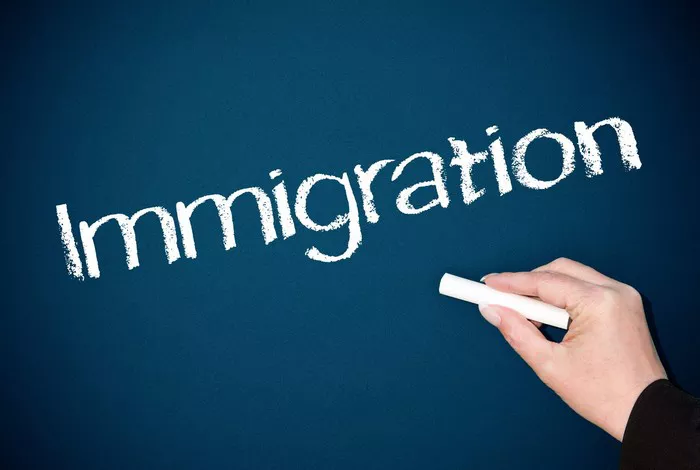In the realm of U.S. immigration, the H-1B visa stands as a pivotal pathway for skilled foreign workers seeking employment in specialty occupations. However, for many H-1B holders, the ultimate goal is to secure lawful permanent residence, commonly known as a green card. This article delves into the intricacies of the H-1B visa, explores various routes to obtaining permanent residency, and provides insights into the challenges and opportunities along the way.
The H-1B Visa: Overview and Eligibility
The H-1B visa is designed for foreign nationals employed in specialty occupations that require theoretical or technical expertise in specialized fields such as science, engineering, or IT. Administered by the U.S. Citizenship and Immigration Services (USCIS), obtaining an H-1B visa involves several key criteria:
Job Requirements and Qualifications: Employers must demonstrate that the position requires specialized knowledge and that the candidate possesses at least a bachelor’s degree or its equivalent in a relevant field.
Employer Sponsorship: Unlike other visa categories, the H-1B requires an employer to sponsor the applicant. The employer must file a petition with the USCIS, detailing the terms of employment, including wages and job duties.
Numerical Cap: The H-1B visa is subject to an annual numerical cap, which can present challenges due to high demand. Certain exemptions exist for institutions of higher education, non-profit organizations, and government research organizations.
Challenges and Opportunities on H-1B Status
While the H-1B visa provides temporary work authorization, it does not offer a direct pathway to permanent residency. Many H-1B holders face the following challenges:
Dual Intent: H-1B visa holders are allowed to have “dual intent,” meaning they can pursue permanent residency without jeopardizing their current nonimmigrant status.
Employer Dependency: Since the H-1B visa ties the foreign national to a sponsoring employer, changing jobs can be complex and requires the new employer to file a new H-1B petition.
Immigration Backlogs: Lengthy processing times and visa backlogs, especially for certain countries, can significantly delay the transition from H-1B to permanent residency.
SEE ALSO: CHALLENGES OF SECURING AN EB-1 VISA: IS IT HARD?
Pathways to Lawful Permanent Residence
1. Employment-Based Green Cards
For H-1B visa holders, the most common route to permanent residency is through employment-based green cards. This process typically involves the following steps:
Labor Certification: Many employment-based green card categories require the employer to obtain a labor certification from the Department of Labor (DOL), demonstrating that there are no qualified U.S. workers available for the position.
Immigrant Petition: Once the labor certification (if required) is approved, the employer files an immigrant petition (Form I-140) with the USCIS on behalf of the employee.
Adjustment of Status or Consular Processing: After approval of the Form I-140, the employee can apply for permanent residency either through adjustment of status (if already in the U.S.) or consular processing (if outside the U.S.).
2. Family-Based Green Cards
In some cases, H-1B holders may also be eligible for family-based green cards if they have a qualifying family relationship with a U.S. citizen or permanent resident spouse, parent, or child.
Special Categories and Considerations
1. National Interest Waiver (NIW)
Under certain circumstances, individuals with exceptional abilities or those whose work is in the national interest may be eligible for a National Interest Waiver, bypassing the labor certification process.
2. EB-1A Extraordinary Ability
For those with extraordinary abilities in sciences, arts, education, business, or athletics, the EB-1A category provides a direct path to permanent residency without the need for a job offer or labor certification.
3. EB-1B Outstanding Professors and Researchers
This category is designed for outstanding professors and researchers with at least three years of experience in teaching or research and international recognition.
Navigating the Immigration Process
1. Legal Assistance and Resources
Given the complexity of U.S. immigration laws and procedures, seeking guidance from experienced immigration attorneys or accredited representatives can significantly improve the chances of a successful immigration journey.
2. Documentation and Preparation
Accurate and thorough documentation is crucial throughout the immigration process, from filing initial petitions to attending interviews and providing evidence of eligibility.
Conclusion
The journey from an H-1B visa to lawful permanent residence in the United States can be arduous but rewarding. By understanding the nuances of each step, leveraging available immigration pathways, and ensuring meticulous preparation, foreign nationals can navigate this complex terrain with greater confidence and clarity. As U.S. immigration policies continue to evolve, staying informed about updates and seeking professional advice remain paramount in achieving long-term immigration goals.
In conclusion, while the H-1B visa serves as a valuable tool for addressing labor shortages in specialized fields, its true value often lies in the opportunities it provides for skilled professionals to establish roots and contribute to the diverse tapestry of American society through permanent residency.


